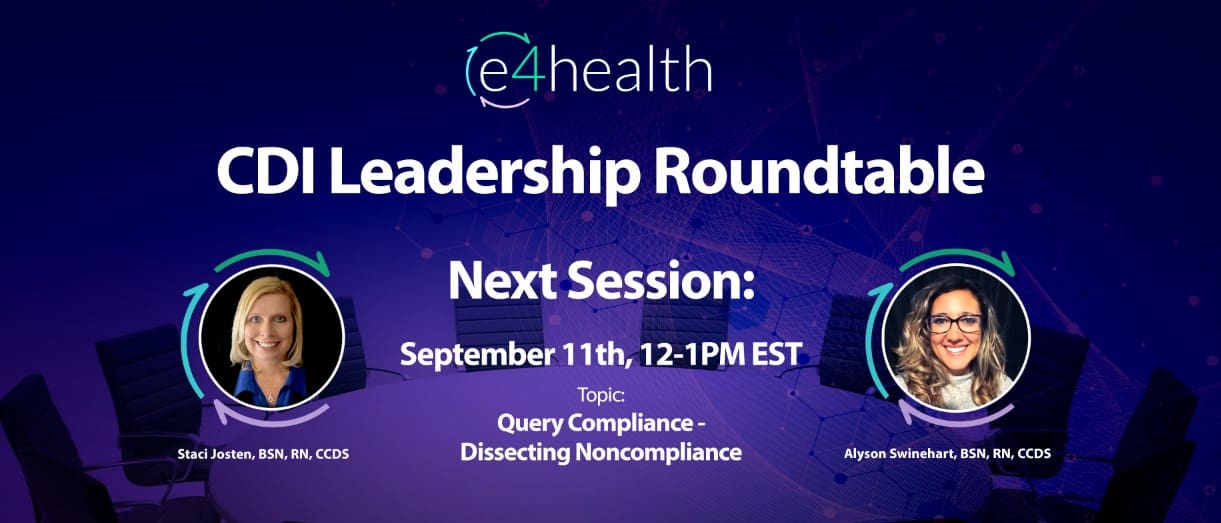Pancytopenia
Pancytopenia: A hematologic condition where there is a lower-than-normal number of red and white blood cells and platelets in the blood. Common etiologies include, but are not limited to:
- Autoimmune disorders
- Bone marrow disorders
- Genetic disorders
- Infection (e.g., COVID-19, Sepsis, HIV infections)
- Poor nutrition
- Pregnancy
- Chemotherapy
- Radiation therapy
- Exposure to certain toxins, chemicals or medicines
- Myeloid neoplasms
- Aplastic anemia
- Megaloblastic anemia
Diagnostic Criteria
Thresholds depends on age, sex, race and varying clinical scenarios, however generally recognized criteria is:
- Hemoglobin: <12g/dL in women; <13 g/dL men
- Platelets: <150,000
- WBC: < 4,000 per ml; OR an absolute neutrophil count < 1800 per ml
Signs and symptoms may include abnormal bleeding, fatigue, dizziness, weakness, difficulty breathing, chest pain, tachycardia, fever, pale skin, rash, ulcers, easy bruising, or petechiae.
Coding Considerations
Review pertinent Coding Clinics such as:
- AHA Coding Clinic, First Quarter, 2023 p. 23 Pancytopenia due to Acute Myeloid Leukemia
- AHA coding Clinic, Fourth Quarter, 2021 p. 47 o ICD-10-PC New/Revised Codes: Section 0-Medical and Surgical: Extraction of Bone Marrow from Other Sites
- AHA Coding Clinic, Third Quarter, 2022 p. 22 Neutropenic Fever with Pancytopenia due to Chemotherapy
- AHA Coding Clinic, Third Quarter, 2020 p. 24 Anemia, Thrombocytopenia and Neutropenia
- AHA Coding Clinic, First Quarter, 2019 p. 16 Pancytopenia due to Acute Myelogenous Leukemia
- AHA Coding Clinic, Fourth Quarter, 2014, p. 22 Neutropenic Fever, with Anemia and Thrombocytopenia
Excludes1 notes identifies that pancytopenia cannot be coded with the following:
- Bone marrow infiltration (D61.82)
- Congenial (pure) red cell aplasia (D61.01)
- Hairy cell leukemia (C91.4)
- HIV Disease (B20-)
- Leukoerythroblastic anemia (D61.82)
- Myeloproliferative disease (D47.1)
Excludes2 notes identifies:
- Pancytopenia with myelodysplastic syndromes (D46.-)
- Antineoplastic chemotherapy induced pancytopenia (D61.810) with aplastic anemia due to antineoplastic chemotherapy (D61.1)
- Other drug-induced pancytopenia (D61.811) with aplastic anemia due to drugs (D61.1)
Other constitutional aplastic anemia (D61.09), is assigned if the pancytopenia is congenital rather than due to chronic disease. Many pancytopenia codes map to an HCC and can affect Risk Adjustment scores.
CDI Practice Considerations
Pancytopenia is a manifestation of another underlying condition. When reviewing for etiology it can be grouped into three categories: decreased production (central type), bone marrow infiltration/replacement or increased destruction (peripheral type). Review the record closely and query when necessary. Some examples include:
- When pancytopenia is drug induced, ICD-10-CM distinguishes whether it is due to antineoplastic chemotherapy (D61.810) or other drug (D61.811), both of which are designated as MCC, potentially impacting MS-DRG assignment.
- When pancytopenia is NOT drug induced, ICD-10-CM distinguishes it as other pancytopenia (D61.818), designated as a CC, potentially impacting MS-DRG assignment. Be aware per Coding Clinic, this includes cases when pancytopenia is due to Acute Myeloid Leukemia (AML).
- Sequencing of principal diagnosis:
o The Official Guidelines for Coding and Reporting for anemia associated in malignancy (I.C.2.c.1) does not apply to pancytopenia, as pancytopenia encompasses more than anemia. Therefore, when patients are admitted with pancytopenia due to a malignancy, AND the pancytopenia is the focus of the admission/care/treatment, the pancytopenia would be assigned as principal diagnosis.
o When the admission/encounter is for management of anemia documented as “pancytopenia due to chemotherapy”, D61.810 is assigned for pancytopenia caused by cancer-fighting drugs. In cancer patients, pancytopenia usually occurs due to bone marrow suppression from chemotherapy.
Looking for CDI help?
e4health CDI Education

Earn FREE ACDIS CEUs when you join Staci Josten, RN, BSN, CCDS, Alyson Swinehart, BSN, RN, CCDS, and other CDI leaders for a roundtable discussion regarding important, timely industry topics! The topic for September’s discussion is: Query Compliance – Dissecting Noncompliance. We will provide background on this topic, share industry insights, and facilitate collaborative discussion with guided questions and answers.
Click here to register!
Learning Objectives:
- Identify non-compliant query practices
- Explain how to transform non-compliant queries into compliant queries
- Understand when to use Yes/No query formats
What is the e4health CDI Leadership Roundtable?
The goal for the virtual CDI Leadership Roundtable Discussion is for CDI leaders to explore specific topics within CDI, learn about the topic and from each other. During each roundtable, e4health CDI Leader’s will present a CDI topic, spend time sharing current industry standards or some education regarding this topic and then open with probing questions for group discussion.
Who should attend the e4health CDI Leadership Roundtable?
The focus of this group is for those who have influence over CDI program process, policy, and education.
Why should I attend the e4health CDI Roundtable?
This will be a wonderful place to learn, share your wins and challenges and collaborate with other CDI leaders across the industry. Also, after completing a survey, free ACDIS CEUs will be earned.